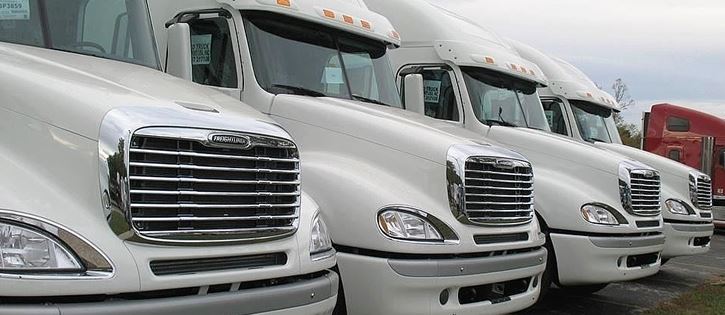
Congestion in America’s growing cities is an big problem. While congestion can be a sign of healthy economic activity and the full use of roadway infrastructure, for the motor carrier industry congestion leads to increased travel times and, worse, reduced reliability of travel times. Congestion also increases vehicle operating costs (e.g., lower fuel economy, more frequent engine maintenance, etc.)
A related issue, and one that is perhaps more important for motor carriers, is the deterioration in travel time reliability in many urban areas. Freight shippers have become used to receiving a high level of highway-freight service, and can demand and receive schedule reliability such that deliveries consistently arrive in time windows of 15 or fewer minutes, even on runs of ten hours or longer. Whole systems of inventory control and supply-chain management have been built around the expectation that this kind of reliability is a permanent feature of freight service. As a consequence, carriers can be crippled by unexpected delays.
In our recent study indicated that on average, carriers value savings in transit time at between $144 and $192 per hour, while savings in non-scheduled delay are valued at $371 per hour.27 In other words, the time late (unexpected delay) was valued at roughly twice the rate of transit time. As congestion grows and a larger portion of roadway capacity is being used, highways are increasingly susceptible to this unexpected delay, with potentially serious implications for motor carriers.
In our interviews with motor carriers, most identified urban congestion as a problem that affects their productivity and service quality, but none put it at the top of the list. Clearly there is an expectation of some congestion in urban areas, and carriers adjust their operations to cope with it. What troubles some in the industry is the prospect that congestion will get worse, and thereby upset their logistical structure. For example, terminal locations and delivery schedules may be set up under the assumption of 500 miles of travel in a day, and large reductions in travel speed would force a costly change to this structure.
Elimination of urban congestion is virtually impossible, but a variety of strategies are available to reduce its extent or at least make it more tolerable. These strategies include: investment in more highway capacity; measures such as road pricing to reduce demand for highway travel or divert it from peak periods; and measures for more efficient use of the existing physical structure. While the motor-carrier industry would like to see more highway investment, some of their problem, especially reliability, may be best approached with improved information systems giving advance warning and improved incident management procedures to reduce the effect of incidents.
Several of the motor carriers we interviewed stressed the importance of avoiding peak periods whenever possible. Congestion is most acutely felt by the downstream end of the supply chain – shipments from distribution centers to retail stores, which are by inevitably located in populous and often congested areas. Carriers have advocated shifting deliveries to night or early morning hours, but this has been resisted by many retailers (and by some municipalities). Shifting driving to off-peak hours could also create greater accident risk if drivers operate vehicles during hours when their natural sleep cycle causes them to be less alert.